Hard to believe that a significant chunk of this trip is already over – I’ve started writing this while sitting on the deck of a little Galapagos tour boat, watching the sun set on the last day of this week long cruise. Though now that I’m posting it, I’m all the way in Lima – there was no internet access or phone signal out in the ocean, not to mention little interaction with any humans other than the 25 of us on board. It’s been a very other-worldly week.
But before getting on this boat, I wrapped up a pretty hectic week of travel and preparations. I got back from Sydney on Tuesday mid-morning, and by that evening I’d already done all my laundry and was starting to re-pack. Wednesday and Thursday I was back at work, trying to be as productive as possible (considering the circumstances). The time frantically vanished amidst blog post writing, sorting out pictures, gathering last supplies, and throwing them back into my luggage. By 5am Friday I was on my way back to the airport. In all, I spent about 76 hours back in the United States.
I got to Quito around 10:30 Friday night, and stood around for about 20 minutes before my ride showed up. Apparently the flight was a bit earlier than expected, so I got to be that awkward tourist hanging around the airport, looking for the person with their name on a sign. In the van on the way to the hotel I met Tim and Viki Anderson, a couple from Victoria, British Columbia, who were on the same Galapagos tour. We agreed to meet up the next morning for breakfast, since we had a free day to spend in Quito before flying out to the islands.
Tim and Viki, as it turns out, are pretty energetic travelers. Though I’d guess they’re in their 60s or 70s, they were the ones setting the aggressive pace, not me. After an early breakfast, we took a taxi out to the Teleferico, a gondola that takes you up the mountains on the west side of Quito. The city sits in a long, narrow valley in the Andes, and is itself pretty high up in the Andes – at roughly 9,000 ft. The Teleferico takes you up to 13,000 ft, which was a noticeable difference. Walking around up there was stunning, with stark Andes landscapes and views of Quito, and a definite thinness in the air. Good altitude practice for next week on the Inca Trail – I know now that I can handle the altitude, but hiking that high up certainly takes more effort.
Once back in Quito, we took the cab out to some lookout Tim had heard of – the cab driver didn’t know it very well. He spent about 20 minutes driving around a poor community on the mountain side, searching for this lookout and asking locals for directions, only to finally get us there and have it be a total let-down – not nearly as good a view as Tim had expected. The drive was definitely worth it, though; I doubt I’d have gotten to see that side of Quito any other way. Definitely poorer and dirtier than the other parts we saw, but not as bad as some places I’ve seen – not even on the same scale as India.
After the lookout, we had the cab drop us at the Basilica and then walked around from there. We made it to the heart of the old city, which has the president’s mansion and a number of plazas; not the most exciting, though there was a giant health fair going on that was full of people and loud music. After lunch, we spent an hour walking around the town and then back to the hotel; I rested for the rest of the afternoon.
Sunday started early, and by noon we were all out on San Cristobal Island in the Galapagos. “We,” at this point, had expanded to a set of 15 passengers: myself; Tim and Viki; Ian and Jillian from Canberra, Australia; Andrew and Sarah from Auckland, New Zealand; John and Kim from London; Bret and Karen from Alberta; Stephan from Dusseldorf; Karauna from London; Jeanie from Dublin; and Cynthia from LA. A remarkably good, energetic, positive group – with few exceptions, everyone got along well. Stephan was my roommate on board the Xavier III – a.k.a. the G4 – our 16-passenger boat. Along with our guide, Wilo, and 8 other crew members, we set out from San Cristobal around 1pm.
The boat, and everything about this tour, was pretty lux. There are nine passenger rooms, each of which can hold two people – although they never fill the boat with more than 16. The lower deck, which sits partially below the water level, has five of those rooms, along with the crew room, motor, and generator. Up on the main deck is the kitchen, dining area, and lounge/bar; toward the back is an open staging area where we had out wetsuits, snorkeling equipment, life jackets, shoes, etc. The upper deck has a nice big seating area at the back, with six lounger chairs; up front are the remaining four passenger rooms – one of them mine – the captain’s room, our guide’s (Wilo’s) room, and the bridge. Last but not least, on the roof of the upper deck are a couple big padded areas to lie out, and some clothes lines.
Our schedule each day varied slightly, but generally followed the same pattern: breakfast at 7am, featuring tons of fruit, various breakfast-y items I usually couldn’t eat, and a special bowl of puffed quinoa cereal for me (I’d warned them of my dietary restrictions when I booked). Around 8am we’d disembark for the morning activity, which was either a walk on an island, a snorkel off the beach or off one of the zodiacs (our little transport boats), or both. By 10:30 or 11 we’d be back onboard, have a little snack (usually juice), and then have lunch at noon. Around 2 or 2:30 we’d have our afternoon activity, same format as in the morning; we’d get back anywhere between 4:30 and 6, and have a snack. Dinner at 7pm. We’d all linger around dinner until 8 or 8:30, but at that point people would be so tired – myself included – that we’d go to bed. The latest I ever stayed up was 10pm; I’d usually be in bed by 9. At some point in the evening, after we’d tucked in, the motor would start up, the anchors would clankle their way up, and we’d set off overnight for the next destination.
Sunday, once we got settled after lunch, was no exception to this routine. In the afternoon we took a walk around Isla Lobos, an island off the coast of San Cristobal, and got our first good look at sea lions, marine iguanas, and the famous blue-footed boobies. As my Facebook photos will demonstrate, I didn’t know how to stop taking pictures of the animals… I apologize in advance. In general, it was just incredible to be in these animals’ space, from the smells to the sounds, to the way they (usually) completely ignore us humans around them, to the way the camouflage perfectly with their surroundings. I just loved it.
One quick aside about boobies, my favorite bird of the Galapagos: aside from their wonderful name, I like these birds for several other reasons. First, they’re cute. They have a kind of dumb look on their faces, and will stare blankly at your hand if you wave it in front of them (hence the name, which comes from the Spanish word “bobo,” meaning clown or fool). Secondly, they’re talented: they fly over the ocean, looking for fish, and then dive bomb down into the water to eat their prey. Apparently they have a 30% success rate, which seems pretty good, considering. Lastly, you’re naturally inclined to feel a bit bad for them, since the frigate birds – the pirates of the Galapagos – get a good portion of their food by stealing the boobies’ catch. I’ll get to frigate birds later.
Later that afternoon, after our walk, we had a snorkel off the coast of Isla Lobos. Every single snorkel (there were nine total over the course of the week) had some special aspect to it. In addition to an absurd number of tropical fish, this first snorkel featured the brief appearance of a sea turtle; there would be plenty more to come, but for a first go, it was pretty exciting.
Monday morning’s activity was a walk around the island of North Seymour – we got to see a lot of male frigate birds vying for the attention of females. To do so, these large, black birds inflate a big red pouch that runs from their necks to their bellies, and squawk for attention. Most memorable was a group of four males, pouches inflated and hollering together, that successfully attracted a female. No, I didn’t get to see bird sex. But it was pretty cool to see the attraction mechanism work! Once the female showed up, there was just a lot of confused-seeming fluttering and squawking. North Seymour also featured land iguanas, which are yellow, scaly, and quite a bit bigger than their black, slimy marine counterparts.
That afternoon we had a snorkel off the zodiacs: after getting dropped in rather deep, choppy waters, we saw a white-tip shark, another sea turtle, and of course, plenty of fish. Some people also saw a hammerhead shark, but I missed it. Later, we took a walk on Mosquera, a small, mostly sand island, where we saw a fully decomposed whale carcass – someone apparently dragged the whale onshore after it died, and it has since decomposed so completely that it looks like a museum exhibit. We also saw some fur seals from the zodiacs on the way there – a special sub-species endemic to the Galapagos that has shorter fur.
Tuesday morning we arrived near the islands of Santiago and Bartolome. We visited Santiago in the morning; the island, or at least the part we saw, is entirely semi-recent (i.e. within 150 years) lava fields, black and endless, dotted by now-dormant volcanoes. Not many animals out there, save for a few lizards. Afterward we had a snorkel off the beach, with the major highlight being a penguin: I floated for about five minutes watching a Galapagos penguin – the third-smallest penguin variety, with shorter fur – go at it with a giant school of what looked like sardines. It swam around snapping at them, but didn’t seem too successful; the fish were quick, and the whole mass of them deformed perfectly around the penguin’s path. I was impressed – I’d be surprised if the penguin got more than a few nibbles. Times like these I wish I had an underwater camera!
After lunch we visited Bartolome, which may well be my favorite island out of the whole trip. Bartolome is famous for being one of the most picturesque islands, and it lives up to expectations. The focal point is pinnacle rock, a giant rock formation jutting out of the water. Next to it is an absolutely perfect beach, clear turquoise waters and perfect scenery, not to mention great snorkeling. We saw sea stars, a sea lion, another white-tip shark, a stingray camouflaged in the sand, a penguin perched on a nearby rock, and – of course – hundreds and hundreds of fish. I wish I knew more about the fish… there were a few varieties we saw most often, one with a yellow tail and a purple body, and another chunkier-looking fish with big front teeth, brightly colored with oranges, yellows, greens, and blues. While killing time after snorkeling, we walked across the island to another beach, where we saw sea turtles floating nearby.
Later, just before sunset, we took a hike up to a lighthouse perched on top of a hill on Bartolome. Amazing views – from that height and location, we could see about a dozen different islands. Stunning.
Wednesday was a bit of a transitionary day. The tour company operates the boat on a 2-week cycle, and every Sunday and Wednesday, some passengers get off and some get on. Some of us, myself included, were on for a full week – Sunday to Sunday – but about half the passengers left on Wednesday. Unfortunately, the replacement bunch we got later that day was decidedly less cool, though with a few exceptions. My favorite new additions were Helen and James from Sydney, Mike from the UK, who now lives in SF, and Ross from Glasgow; Mike and Ross were traveling solo, and roomed together as Stephan and I had done. Stephan, unfortunately, was one of the folks who left on Wednesday, and my replacement roommate was… not my favorite. I’ll spare details on him and my other lesser-favorites, but it suffices to say, there were way too many compulsive talkers.
Aside from the newbies, Wednesday was dominated by land turtles. In the morning we visited the Darwin center, a breeding center for turtles, and in the afternoon we drove inland on Santa Cruz Island to visit a private turtle preserve. I’ll admit, I didn’t totally understand the purpose, since the entire island is basically a turtle preserve. But it did provide a nice concentration of turtles, which was good for pictures.
Thursday morning we visited Rabida, which featured a red sand beach. The snorkel that morning wasn’t as interesting by comparison to some of those on previous days, but there were a good concentration of sea lions just offshore, and we got to swim very close (i.e. within a meter) of them, which was pretty awesome. That afternoon we visited Bachas Beach, back on Santa Cruz, where the highlight was a lone flamingo hanging out in a lagoon… forget Lonesome George, the famous turtle, we found the lonesome pink flamingo. The snorkeling off Bachas Beach was, unfortunately, the worst out of the entire week – the sand was so incredibly fine and flour-like (also beautiful), that the water was murky/soupy with sand – almost impossible to see anything. I did see one stingray, but otherwise almost nothing.
Thursday afternoon also featured a strange little twist of fate. Tim and Viki hadn’t been holding up so well onboard the boat: Tim didn’t sleep at all on Sunday night, when we first got on, and the sea sickness and exhaustion was too much – he and Viki left the boat Monday afternoon, to spend a couple days in one of the major cities (Puerto Ayora) and recuperate. They then returned Wednesday, but poor Tim suffered the same sleeplessness that night and on Thursday, the two of them left for the last time. Once my new (disliked) roommate heard about this, however, he asked if he could switch into their now-vacant room. I’m guessing he didn’t like me that much, either. So although it was sad to lose Tim and Viki yet again, the silver lining was two fewer nights rooming with this guy. By Friday morning he was out of the room, and I had the space to myself for the rest of the week.
Friday was our day on Floreana, one of the two southernmost islands of the Galapagos. In the morning we walked around the island to a beach littered with sea turtles and stingrays, followed by a snorkel around an offshore rock. I briefly saw a sea turtle, and got to play with sea lions again – very fun. I’m not sure how to describe it exactly, but I feel like sea lions are the dogs of the sea: playful when they’re engaging you and others, but also very content to lie around in the sun and sleep. I know that sounds generic, but there really is some quality to them that reminds me of dogs.
In the afternoon we had a walk around a different part of Floreana, visiting the “Post Office” and a lava tunnel. The Post Office is literally a wooden barrel with a little pitched roof, full of postcards without stamps. The idea is that if you want a postcard delivered, you put it in there, and then take out a different postcard addressed to a location near where you live – then you go and hand-deliver it yourself. Or, failing that, take a postcard addressed to somewhere in your home country, and then mail it when you get home. Another cute Post Office concept: leave a postcard for someone who you think should visit the Galapagos, and hope they later come and pick it out of the barrel. I didn’t have any postcards, but I did take one addressed to someone in Danville… it was the closest one I could find. I think I’ll just mail it when I get home, not sure if I’m motivated enough to hand-deliver a postcard to Danville :p.
The lava tunnel was pretty neat, too – we climbed into a pretty big cave formed by an old lava stream – the exterior of the stream hardens faster than the interior, leaving a tunnel that descends into the ocean. We walked until we hit water, and then turned back.
Once back on the beach, we started one of our last snorkels – and despite some sandy murky waters, I found a sea turtle and spent a good ten minutes watching it in awe. In previous snorkels, the sea turtles would move away from us quickly – this guy didn’t seem to care, however, and happily munched away at some algae on a rock, floated about, and ignored me altogether. It was a peak moment for me.
Saturday, our last full day, revolved around the island of Española, the oldest and southeastern-most island of the Galapagos. In the morning we took a walk around the island, and saw two new birds: masked boobies, and albatross. The masked boobies are white, with a black coloring in the area around their eyes – hence the name. The albatross were hilarious: giant, goofy looking birds with funny longer hairs on their heads. The albatross apparently mate and give birth almost exclusively on Española, but then fly away for roughly six years before returning to mate again. We also got to see plenty of blue footed boobies, marine and land iguanas, frigates, and – at a distance – a Galapagos hawk.
That afternoon we had one last snorkel, off the coast of Española, with the highlight being five different stingray sightings. The beach itself was also particularly nice, and we all just enjoyed walking around and taking in our last moments in the Galapagos.
Sunday morning, after a quick stop at the “Interpretation Center” (a.k.a. a museum about the history of the Galapagos) on San Cristobal, we flew back to Quito. Sad to leave, but I’ll admit, I was excited to sleep on stationary land; even though I slept fine on the boat, I felt like my sea legs were tenuous, and I was relieved to have made it through the week without any, er, incidents. Success. That evening, a whole group of us went out for dinner in Quito – including Tim and Viki, and Stephan, who had also just returned to Quito after spending a few extra days scuba diving out of Puerto Ayora. Ross decided to go all-out, and ordered a half cuy (guinea pig) for us to share. We named him Gerald. He tasted like chicken, sort of, but with tougher skin.
Monday was largely a busywork day. I took care of my accumulated laundry, taking it to a laundromat down the street that did it all for $4.30 (as opposed to the hotel, which would have charged close to $100…). I also worked on this blog post, sorted through the ~750 pictures I’d taken at that point, and had a video chat with my parents. Aside from that, I took a taxi ride out to “El Mitad Del Mundo” – the middle of the world, a.k.a. the equator – to see some of the cool science exhibits. The coolest was a demonstration of the coriolis effect, the force that makes water spin counter-clockwise down the drain in the northern hemisphere, and clockwise in the southern hemisphere. First, the guide filled a plastic tub of water, centered it on the equator, and drained it – the water dropped straight down, no spin at all. Then, he moved the tub over to the northern and southern hemispheres and repeated; sure enough, the water spun in different directions. Super cool!
That evening, after I did a little last-minute shopping at an Inca craft market, Mike and Ross and I had one last dinner in Quito. And by noon the next day – today – I’d already arrived in Lima. On to the next portion of this trip! I’ll meet up with my new tour group this evening, and tomorrow morning we’ll all fly out to Cuzco; and from there, the Inca Trail and Machu Picchu.
Last closing tidbit:
Ecuador uses US dollars as their national currency, which is a bit strange but convenient. Oddly enough, though, they also mint their own coins – 1, 5, 10, 25, and 50 – which are the same shape and color as their US equivalents, and are used interchangeably with our dimes, nickels, etc. Ecuador (like every other civilized country) also uses dollar coins, and in their case, they use Sacagawea dollar coins, a.k.a. the ones we minted 10 years ago and haven’t seen since. I swear we sent them all to Ecuador.
-Izaak
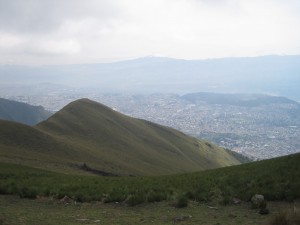
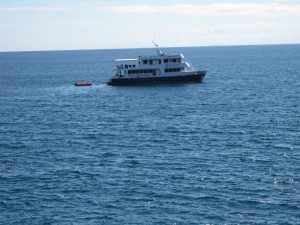
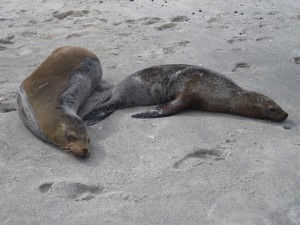

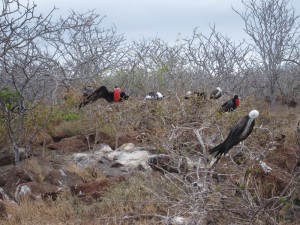
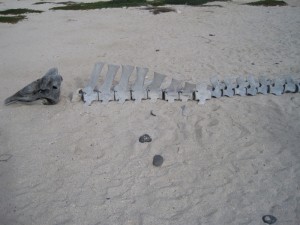
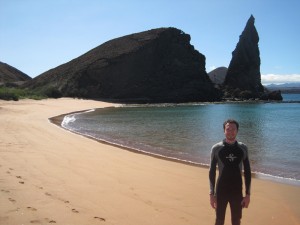
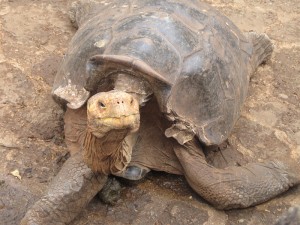
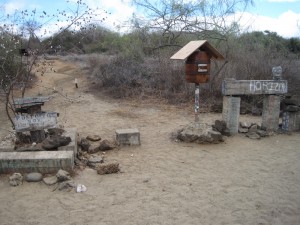



The coriolis effect show is a bit of a gag as far as I know. The person doing it is just very good at pouring water into a bucket. MIT did an experiment where they filled a tank with water and let it stabilize for a day. They were able to observe the effect when draining the tank, but it was minute (took about 20 minutes to drain the tank and rotation was visible only about 12-15 minutes in, reaching a top rotation rate of one revolution every 3-4 seconds near the drain). [http://www.technologyreview.in/article/41411/]
It sounds like you’ve been having an awesome time. So many interesting things to do and see!